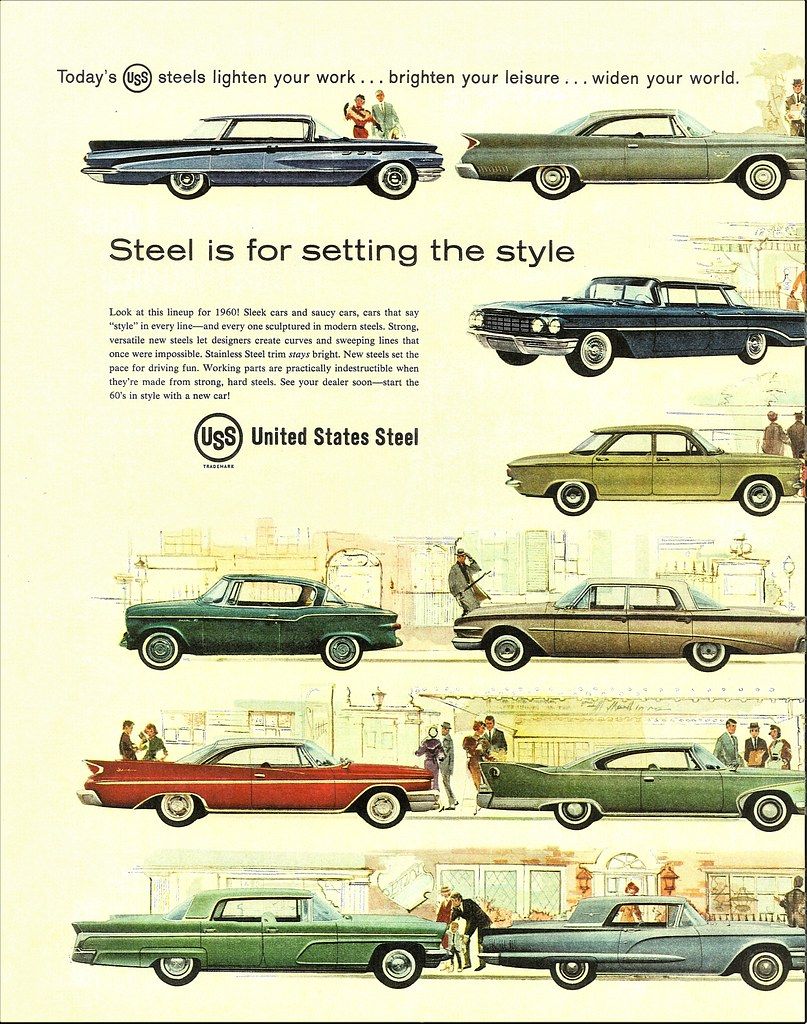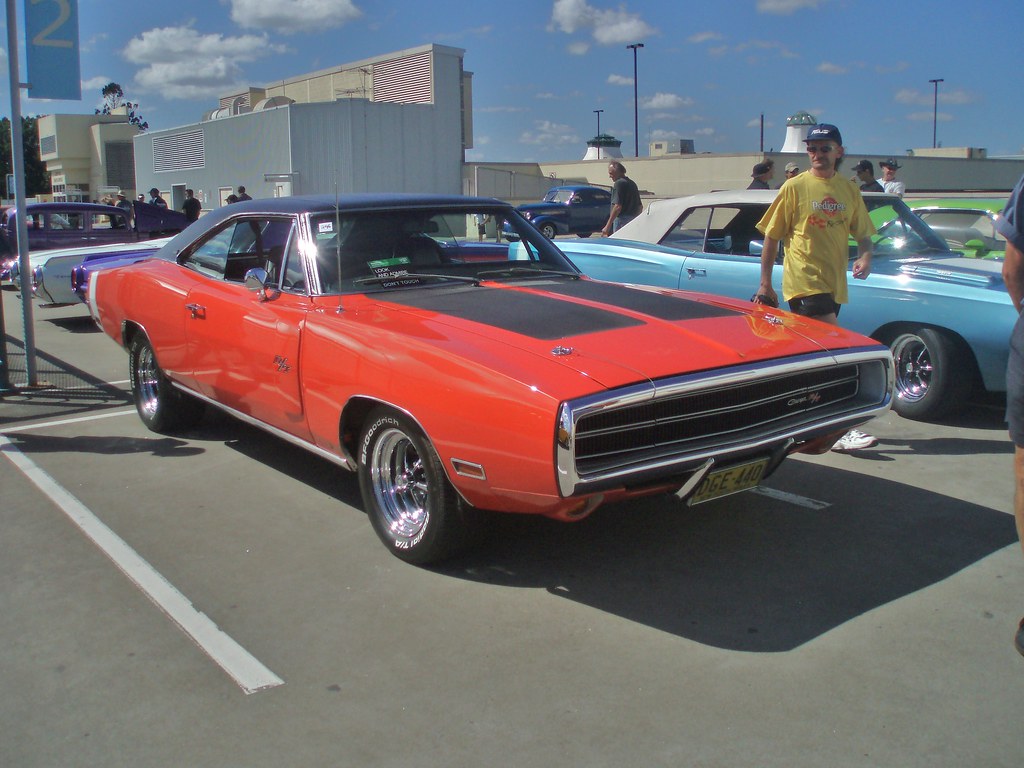
Our love affair with automobiles, it turns out, often begins not on the open road, but right there in front of the big screen or the living room television. Long before we even get our driver licenses, we’re already dreaming of cinematic escapes and vehicular heroics, envisioning ourselves pulling off reverse 180s like Jim Rockford, or maybe even fleeing the fuzz in a legendary Shelby Mustang nicknamed Eleanor.
These weren’t just background props; they were characters, co-stars that etched themselves into our collective consciousness. We all secretly wished for a best friend as loyal and brilliant as KITT, and let’s be honest, every orange Dodge Charger we’ve ever seen has, in our minds, the potential to take flight, right? These four-wheeled marvels built an undeniable passion within us, proving that a well-chosen car can steal scenes and hearts alike.
But what happens when the cameras stop rolling and the credits fade? Do these automotive legends simply vanish into the Hollywood prop graveyard, or do they find new lives, perhaps in museums, private collections, or even continuing their star turns at fan events? Today, we’re taking a deep dive into the fascinating post-production lives of some of the most famous cars to ever grace our screens, revealing where they landed long after their time in the spotlight.
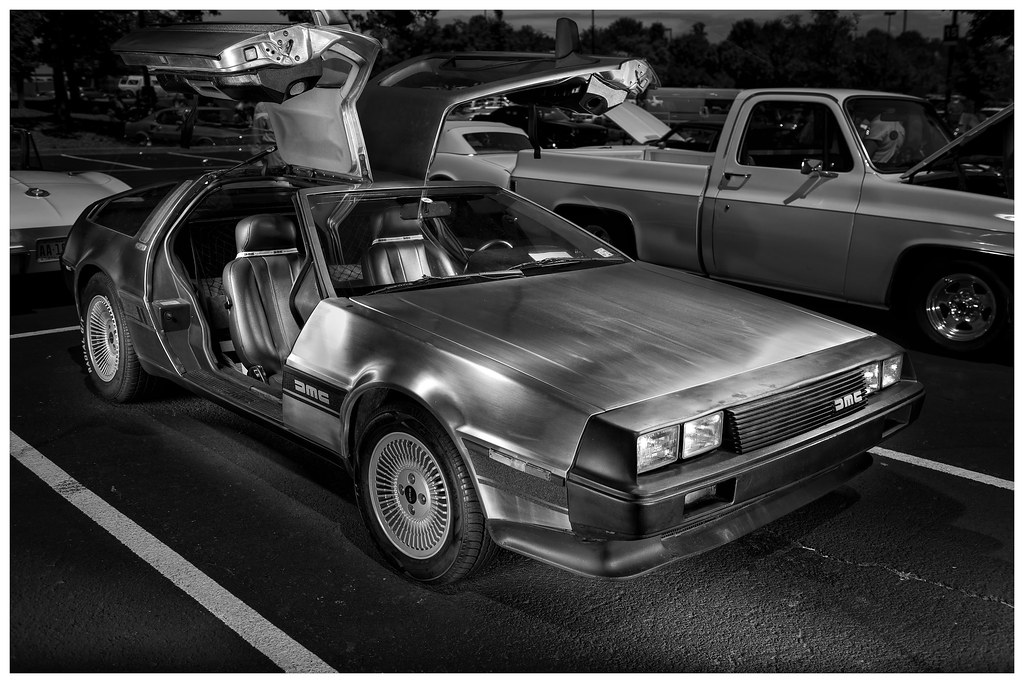
1. **The DeLorean from “Back to the Future”**
When you think of a time machine, chances are a certain gull-winged sports car immediately springs to mind. The 1981 DeLorean DMC-12, as famously piloted by Doc Brown and Marty McFly, isn’t just a car; it’s quite possibly the most iconic film car ever created, capable of traversing the temporal continuum with a flair only possible in the mid-80s.
Doc Brown himself famously mused, “The way I see it, if you’re gonna build a time machine into a car, why not do it with some style?” And style it certainly had. From its stainless steel body to its flux capacitor, the DeLorean redefined what a cinematic vehicle could be, becoming an instant legend the moment it hit 88 miles per hour.
While multiple DeLoreans were naturally put through their paces during the filming of the entire trilogy, the undisputed star was the main “hero car” from the very first film. This particular vehicle, a piece of cinematic history, now proudly resides at the Petersen Automotive Museum in sunny Los Angeles, a testament to its enduring cultural impact.
Its journey wasn’t always smooth sailing post-filming, but a painstaking restoration process in 2020 lovingly brought it back to its screen-accurate splendor. Fans can now gaze upon it, imagining the momentous adventures it undertook, from the Wild West to the distant future, all while remembering that sometimes, you just need a little plutonium to make your dreams come true.
Read more about: From Showroom Shame to Collector’s Dream: The Flops That Became Automotive Icons
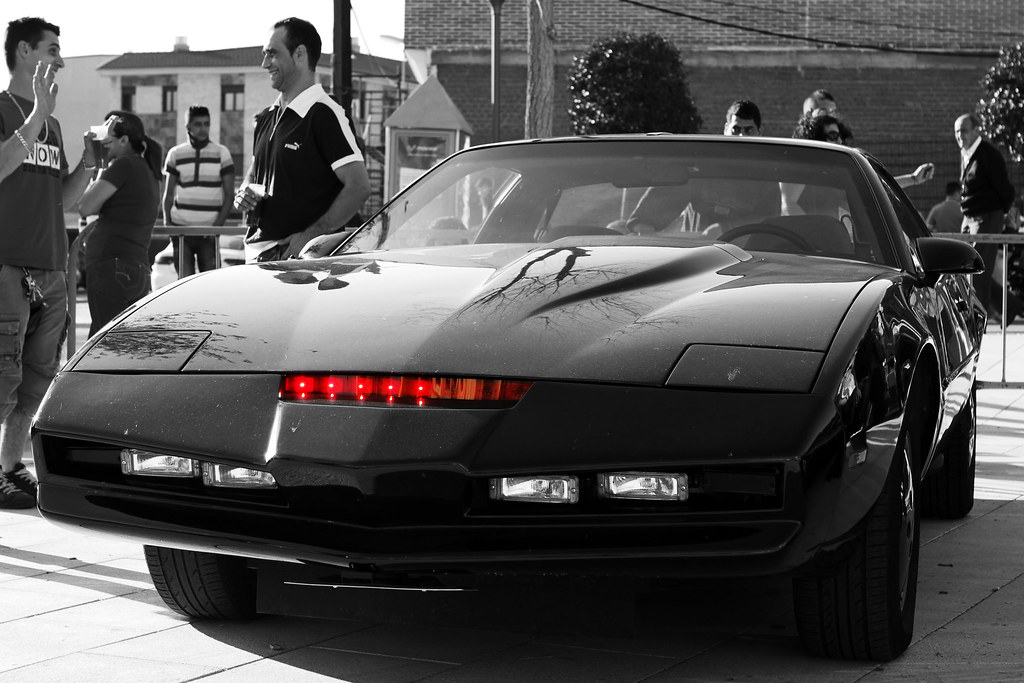
2. **KITT from “Knight Rider”**
Imagine cruising the streets with a super-intelligent, crime-fighting companion who not only talks back but also has your back in every perilous situation. That’s precisely what Michael Knight, portrayed by David Hasselhoff, experienced for four seasons with KITT, the Knight Industries Two Thousand, a modified 1982 Pontiac Trans Am that was far more than just a car.
KITT was a marvel of automotive and artificial intelligence, capable of thinking, talking, and actively assisting in the pursuit of justice. Its glowing red scanner light, sleek black exterior, and calm, rational voice made it an unforgettable character in its own right, captivating audiences who dreamt of such a technologically advanced ride.
Given the rigorous demands of filming a show centered around a high-tech car, it’s no surprise that multiple KITT cars were utilized throughout the production of ‘Knight Rider.’ Thankfully for fans and automotive historians, several of these screen-used models have managed to survive the wear and tear of television stardom.
One particularly sought-after screen-used model found a new home after fetching a cool $192,000 at auction in 2021, proving its value extends far beyond its original purchase price. Another beloved KITT car is reportedly in the possession of a dedicated private collector, who generously shares its iconic presence by taking it to various charity events, allowing new generations to marvel at this legendary talking Trans Am.
Car Model Information: 2024 GMC Sierra 1500 SLT
Name: Pontiac Firebird
Caption: The second, third, and fourth generations of,the Pontiac Firebird Trans Am
Manufacturer: Pontiac (automobile)
Production: February 23, 1967 – August 30, 2002
ModelYears: 1967 – 2002
Class: Pony car,Muscle car
Platform: GM F platform
Related: Chevrolet Camaro
Layout: Front engine, rear-wheel-drive layout
Categories: 1970s cars, 1980s cars, 1990s cars, 2000s cars, All articles with dead external links
Summary: The Pontiac Firebird is an American automobile built and produced by Pontiac from the 1967 to 2002 model years. Designed as a pony car to compete with the Ford Mustang, it was introduced on February 23, 1967, five months after GM’s Chevrolet division’s platform-sharing Camaro. This also coincided with the release of the 1967 Mercury Cougar, Ford’s upscale, platform-sharing version of the Mustang.
The name “Firebird” was also previously used by GM for the General Motors Firebird series of concept cars in the 1950s.
Get more information about: Pontiac Firebird
Buying a high-performing used car >>>
Brand: Pontiac Model: Trans Am
Price: $43,759 Mileage: 32,694 mi.
Read more about: Beyond the Screen: Uncovering the Fates of the Most Iconic TV and Movie Cars Ever
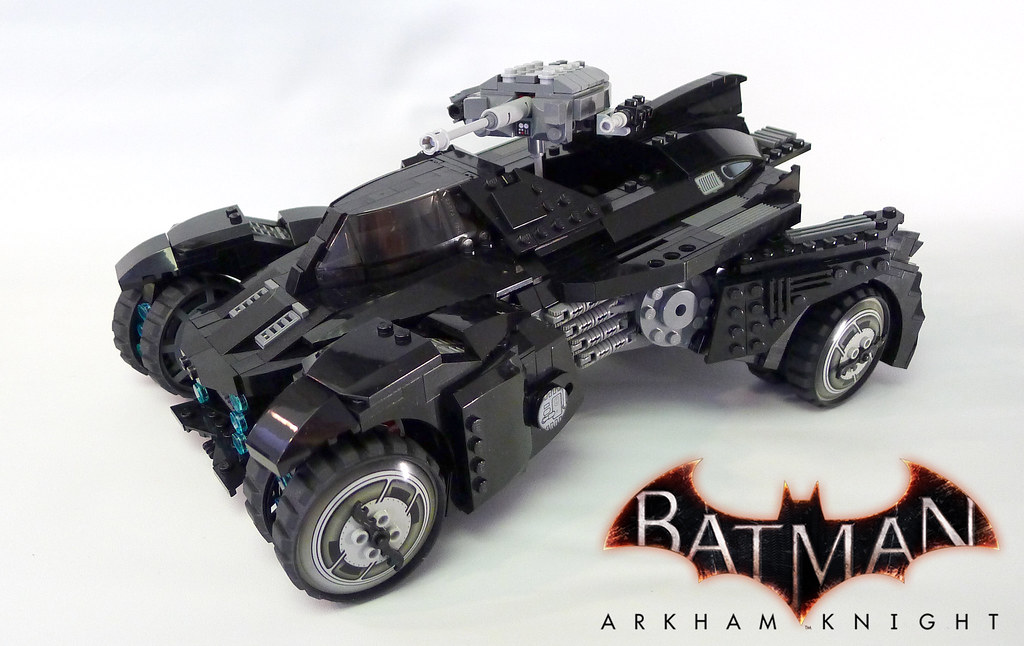
3. **The Batmobile from the 1966 “Batman” Series**
When we talk about the Batmobile, countless iterations might flash through your mind, but for many, the quintessential version remains the one from the campy yet utterly charming 1966-1968 ‘Batman’ TV series. This isn’t just a car; it’s a pop culture landmark, transformed from a humble concept into a crime-fighting icon by the legendary George Barris.
Originally a 1955 Lincoln Futura concept car, Barris’s creative genius converted it into the sleek, black-and-red marvel that became instantly recognizable to millions. With its distinctive turbine exhaust and bat-wing fins, it perfectly embodied the era’s futuristic optimism and superhero aesthetic, a true symbol of Gotham’s defender.
This specific Batmobile was more than just a means of transport for Adam West’s Batman and Burt Ward’s Robin; it was a character unto itself. It was the epitome of cool for its time, equipped with “turbines to speed” and an undeniable presence that made it the perfect centerpiece for a show brimming with colorful villains and memorable catchphrases.
Its enduring legacy was cemented in 2013 when the original Batmobile went up for auction, commanding an astounding $4.2 million from a delighted buyer. Today, this treasured piece of television history still makes occasional, highly anticipated appearances at prestigious car shows across the country, continuing to thrill fans and remind us all of its status as a truly great Batmobile.
Read more about: Lights, Camera, Auction! Unearthing the 15 Most Shocking & Priceless Movie Props Ever Sold
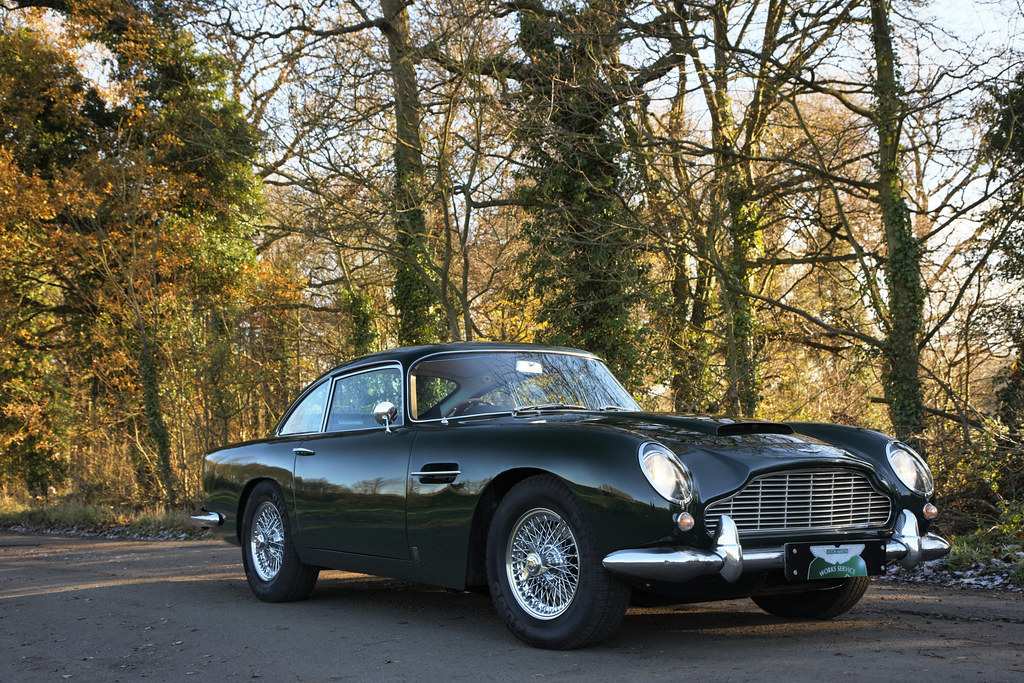
4. **The Aston Martin DB5 from “James Bond”**
When Ian Fleming first penned James Bond, he likely couldn’t have imagined the automotive icon that would become synonymous with his super-spy. But with its debut in 1964’s ‘Goldfinger,’ the Aston Martin DB5 transcended mere transportation to become the definitive Bond car, a silver beauty packed with Q-branch wizardry.
This isn’t just any luxury vehicle; it’s the gold standard against which all spy, movie, and TV cars are judged. Fitted by Q with an array of “modifications” – from ejector seats to machine guns and oil slick dispensers – it wasn’t just fast; it was deadly. This exquisite blend of elegance and lethal capability perfectly mirrored 007’s own persona.
The context explicitly calls it “The greatest James Bond car,” and it’s hard to argue. Its sleek lines and powerful performance captivated audiences worldwide, making the DB5 an instant legend. Even its appearance in the context’s list at number two, just below the General Lee, highlights its immense and enduring fame.
Sadly, the most famous of the original DB5s met a rather un-Bond-like fate: it was stolen from a Florida aircraft hangar back in 1997 and, to this day, remains missing. Its estimated value today exceeds a staggering $25 million, making it not only one of the most famous missing cars but also one of the most valuable, a mysterious chapter in its already legendary story.
Car Model Information: 2024 GMC Sierra 1500 SLT
Name: Aston Martin DB5
Manufacturer: Aston Martin
Production: 1963–1965 (1,059 units),2020 (25 units)
Assembly: Newport Pagnell,England
Designer: Carrozzeria Touring Superleggera
Class: Grand tourer
BodyStyle: coupé
Layout: Front-engine, rear-wheel-drive layout
Engine: DOHC,Straight-6,3995 cc
Order: flip
Abbr: on
Powerout: convert
Transmission: ZF Friedrichshafen
Length: 4570 mm
Width: 1680 mm
Wheelbase: 98.0 in
Predecessor: Aston Martin DB4
Successor: Aston Martin DB6
Doors: 2
Weight: 3311 lb
Sp: uk
Categories: All Wikipedia articles written in British English, Articles with short description, Aston Martin vehicles, CS1: unfit URL, Cars discontinued in 1965
Summary: The Aston Martin DB5 is a British grand tourer (GT) produced by Aston Martin and designed by Italian coachbuilder Carrozzeria Touring Superleggera. Originally produced from 1963 to 1965, the DB5 was an evolution of the final series of DB4. The “DB” designation is from the initials of David Brown who built up the company from 1947 onwards.
The DB5 is best-known for its role in the James Bond films. It was first driven by the fictional spy in the film Goldfinger (1964). In 2013, the car featured on a “British Auto Legends” postage stamp issued by the Royal Mail.
Get more information about: Aston Martin DB5
Buying a high-performing used car >>>
Brand: Aston Martin Model: DB5
Price: $43,759 Mileage: 32,694 mi.
Read more about: Rev Your Engines! The Reality Check on 13 Beloved Movie Cars That Just Can’t Exist as They Do On Screen
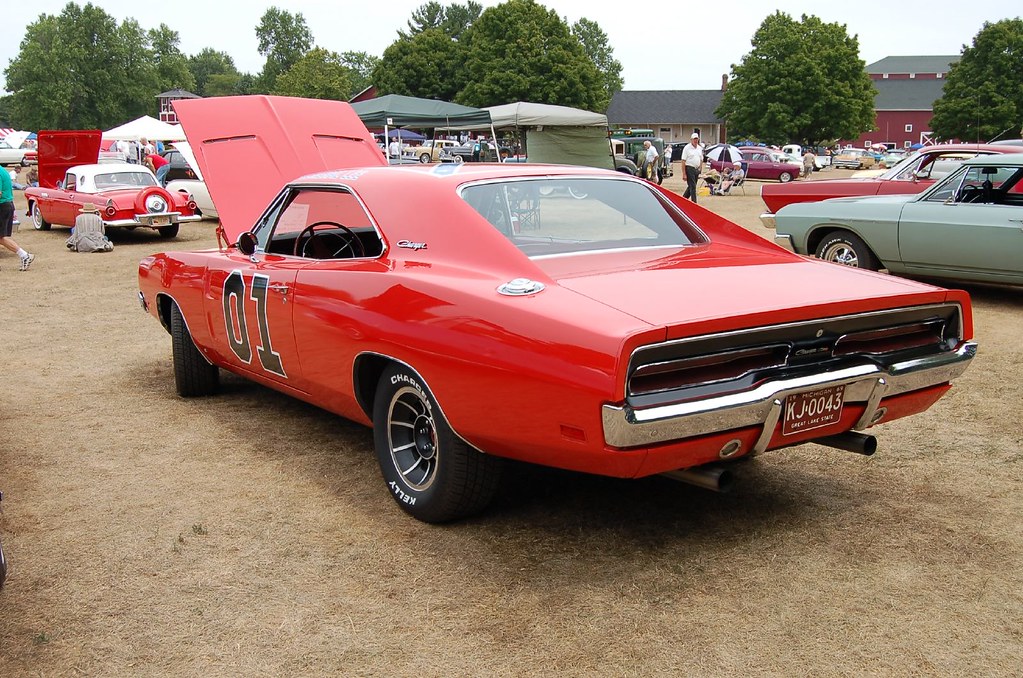
5. **The General Lee from “The Dukes of Hazzard”**
If you hear a chorus of “Yeeeeeeeeeeeeehaaaaaaaaaaaaw” echoing in the distance, chances are you’re thinking of the bright orange 1969 Dodge Charger known affectionately as the General Lee. With its distinctive ’01’ on the doors and its frequent, gravity-defying jumps, this car became the ultimate Hollywood star car for a generation of television viewers.
The General Lee was more than just a car for Bo and Luke Duke; it was a character, an accomplice, and an escape artist rolled into one powerful package. Its iconic status was built on a foundation of thrilling chases, daring stunts, and an undeniable sense of good old-fashioned fun, making it instantly recognizable to fans across the globe.
However, the life of a stunt car is a perilous one, and the General Lee’s on-screen heroics came at a significant cost. The destructive jump scenes and high-speed pursuits meant that an estimated 300-plus Chargers were consumed throughout the series’ 145 episodes, sacrificing themselves for our entertainment. It truly put the ‘muscle’ in muscle car through its paces, episode after episode.
Despite the sheer number of cars destroyed during production, a few resilient examples of the General Lee have managed to survive the rigors of filming. In a heartwarming twist for fans, actor John Schneider, who played Bo Duke, proudly owns a genuine screen-used car that he regularly drives to fan events, keeping the spirit of Hazzard County alive and roaring for everyone to enjoy.
Car Model Information: 2023 Dodge Charger SRT Hellcat Widebody Jailbreak
Name: Dodge Charger
Caption: 1969 Dodge Charger
Manufacturer: Dodge
Production: 1966–1978,1981–1987,2005–present
ModelYears: 1966–1978,1982–1987,2006–present
Categories: 1960s cars, 1970s cars, 1980s cars, 2000s cars, 2010s cars
Summary: The Dodge Charger is a model of automobile marketed by Dodge in various forms over eight generations since 1966.
The first Charger was a show car in 1964. A 1965 Charger II concept car resembled the 1966 production version.
In the United States, the Charger nameplate has been used on mid-size cars, personal luxury coupes, subcompact hatchbacks, and full-size sedans.
Get more information about: Dodge Charger
Buying a high-performing used car >>>
Brand: Dodge Model: Charger
Price: $87,558 Mileage: 4,260 mi.
Read more about: Rev Your Engines! The Reality Check on 13 Beloved Movie Cars That Just Can’t Exist as They Do On Screen
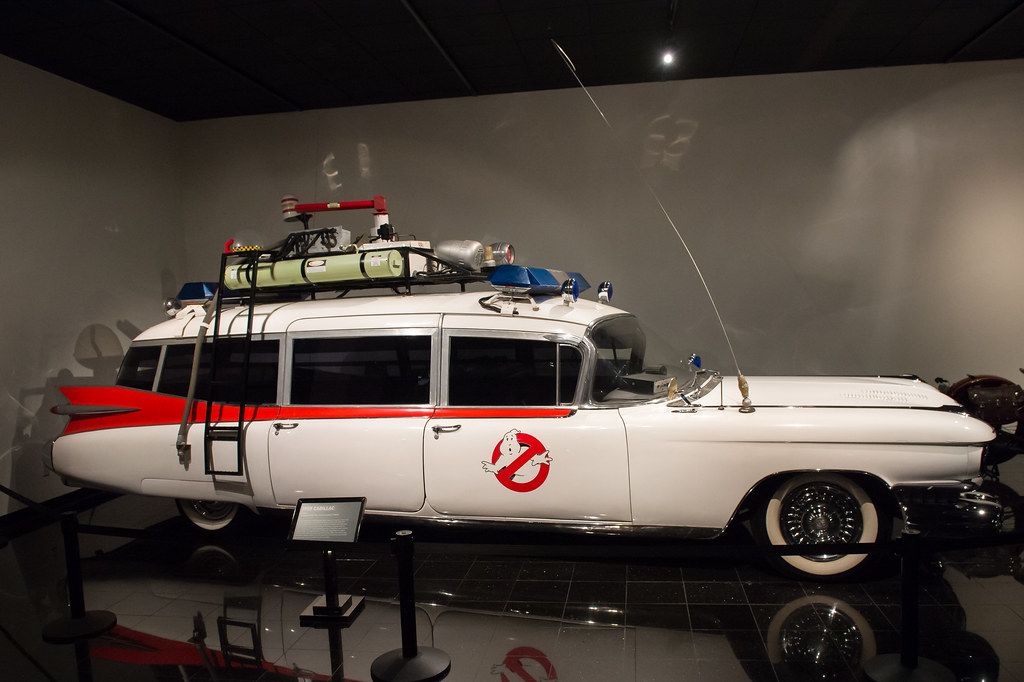
6. **The Ecto-1 from “Ghostbusters”**
When there’s something strange in your neighborhood, who you gonna call? The Ghostbusters, of course! And when they showed up, they did so in arguably one of the most unique and recognizable emergency vehicles in cinematic history: the Ecto-1, a modified 1959 Cadillac Miller-Meteor ambulance that perfectly blended utility with supernatural style.
This wasn’t your average ambulance; it was transformed into the ultimate ghost-hunting machine, brimming with proton packs, traps, and all the high-tech equipment needed to bust specters. Its distinctive siren, flashing lights, and general aura of paranormal readiness made it an instant favorite, becoming as iconic as the Ghostbusters themselves in the 1984 film.
The Ecto-1 was not just transport; it was a mobile headquarters, a beacon of hope against the spectral forces plaguing New York City. Its classic fins and formidable presence, though initially a “modified Miller-Meteor Futura ambulance,” found new life and purpose in the hands of Drs. Venkman, Stantz, and Spengler, cementing its place in pop culture history.
This legendary vehicle received a well-deserved makeover for the 2021 film ‘Ghostbusters: Afterlife,’ undergoing a full and extensive restoration to bring it back to its spectral glory. The fully restored Ecto-1 now resides in Sony Pictures’ possession, a testament to its enduring legacy, with its restoration process reportedly costing even more than the original production of the vehicle back in 1984, highlighting its immense value and importance.
Read more about: Legends of the Asphalt: A Deep Dive into America’s Most Influential Automotive Icons
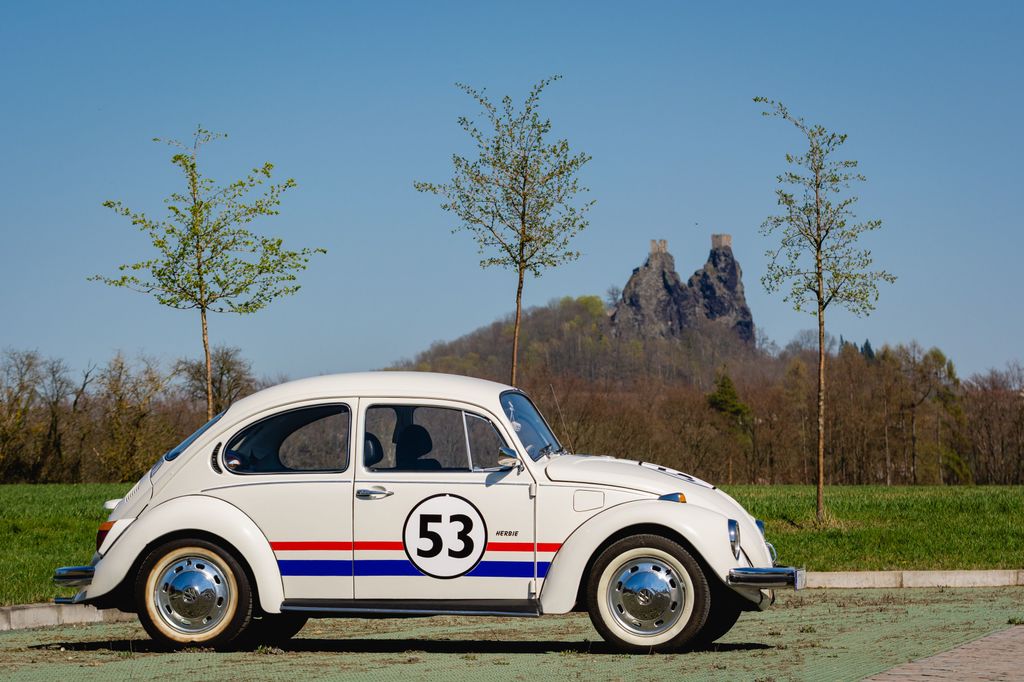
7. **Herbie the Love Bug**
Who could resist the charm of a sentient 1963 Volkswagen Beetle with a mind of its own and a knack for winning races? Herbie, the titular Love Bug, captured the hearts of audiences across several delightful Disney films, proving that sometimes, the smallest cars can have the biggest personalities and the most profound impact.
Herbie was far more than just a car with racing stripes; he was a true star from the very beginning. His ability to drive himself, to express emotions, and to compete with uncanny skill made him a beloved character for generations. Whether he was assisting an orphaned child or getting into comedic scrapes, Herbie always delivered on pure, unadulterated fun.
Given Herbie’s energetic on-screen antics and his multiple film appearances, it’s no surprise that ‘The Love Bug’ franchise required a fleet of these plucky Beetles. More than 11 Herbies were reportedly created for the original movies, each contributing to the magic that made this Volkswagen such an endearing icon.
Today, one of the primary cars used in ‘Herbie Goes to Monte Carlo’ continues its journey with a proud owner. This specific Herbie sold at auction in 2018 for a significant $128,700 to a private collector who ensures it remains in running condition, ready to spread its love bug charm wherever it goes. It’s a wonderful example of a cinematic car living on, inspiring smiles and reminding us that sometimes, the heart of a champion beats beneath a simple hood.
Let’s continue our journey through automotive stardom, delving into the enduring legacies, surprising restorations, and current whereabouts of seven more unforgettable icons that cemented their place in pop culture history. These are the vehicles that sparked our imaginations, defined genres, and proved that sometimes, the true stars of the show have four wheels and an engine, making us dream of cinematic escapes and vehicular heroics long after the credits roll.
Car Model Information: 2012 Volkswagen Beetle 2.5L
Sp: uk
Name: Volkswagen Type 1,”Beetle”
Caption: 1965–1966 Volkswagen Käfer
Manufacturer: Volkswagen
Alt: A front-three quarters view of a pale-yellow Volkswagen Käfer. It features 165/80R15 tires, which shod 15×4. 5″ silver, circular wheels. The Käfer features a beetle-like body, and its window is open. The picture is taken with much greenery in the background, and the photo was edited to give it a more warmer tone.
Aka: List of names for the Volkswagen Type 1
Assembly: #Markets and assembly
Designer: Ferdinand Porsche
Class: Small family car
BodyStyle: Sedan (automobile),convertible
Production: 1938–2003,21,529,464 produced
Successor: Volkswagen Golf Mk1,Volkswagen Gol#First generation (Typ30, 1980),Volkswagen New Beetle
Layout: Rear-engine, rear-wheel-drive layout
Engine: Petrol,Volkswagen air-cooled engine,1192 cc H4,1285 cc H4,1493 cc H4,1584 cc H4
Transmission: manual transmission,Saxomat,Autostick
Wheelbase: convert
Length: convert
Width: convert
Height: 1500 mm
Abbr: on
Weight: convert
Categories: 1940s cars, 1950s cars, 1960s cars, 1970s cars, 1980s cars
Summary: The Volkswagen Beetle, officially the Volkswagen Type 1, is a small family car produced by the German company Volkswagen from 1938 to 2003. A global cultural icon known for its bug-like design, the Beetle is widely regarded as one of the most influential cars of the 20th century. Its production period of 65 years is the longest for any single generation of automobile, and its total production of 21.5 million units makes it the most produced car of a single platform in history and the second-highest of all nameplates manufactured in the 20th century.
The Beetle was conceived in the early 1930s. The leader of Nazi Germany, Adolf Hitler, decided there was a need for a people’s car—an inexpensive, simple, mass-produced car—to serve Germany’s new road network, the Reichsautobahn. The German engineer Ferdinand Porsche and his design team began developing and designing the car in the early 1930s, but the fundamental design concept can be attributed to Béla Barényi in 1925, predating Porsche’s claims by almost ten years. The result was the Volkswagen Type 1 and the introduction of the Volkswagen brand. Volkswagen initially slated production for the late 1930s, but the outbreak of war in 1939 meant that production was delayed until the war had ended. The car was originally called the Volkswagen Type 1 and marketed simply as the Volkswagen. It was not until 1968 that it was officially named the “Beetle”.
Volkswagen implemented designations for the Beetle in the 1960s, including 1200, 1300, 1500, 1600, 1302, and 1303. Volkswagen introduced a series of large luxury models throughout the 1960s and 1970s—comprising the Type 3, Type 4 and K70—to supplement the Beetle, but none of these models achieved the level of success that it did. In 1972, it became the best-selling car of all time, a position it retained for nearly three decades. Rapidly changing consumer preferences toward front-wheel drive compact hatchbacks in Europe prompted Volkswagen’s gradual shift away from rear-wheel drive, starting with the Golf in 1974. In the late 1970s and ’80s, Japanese automakers dominated some markets around the world, which contributed to the Beetle’s declining popularity.
The Beetle remains one of the best-selling cars of all time and is the first to sell over 20 million units. Over its lifespan, its design remained consistent, yet Volkswagen implemented over 78,000 incremental updates. These modifications were often subtle, involving minor alterations to its exterior, interior, colours, and lighting. Some more noteworthy changes included the introduction of new engines, models and systems, such as improved technology or comfort. The Beetle maintains a substantial cultural influence and is regarded as one of the most iconic vehicles in automotive history; its success largely influenced the way automobiles are designed and marketed, and propelled Volkswagen’s introduction of a Golf-based series of vehicles.
Get more information about: Volkswagen Beetle
Buying a high-performing used car >>>
Brand: Volkswagen Model: Beetle
Price: $13,985 Mileage: 27,389 mi.
Read more about: Buckle Up, Boomers! 12 Legendary Rides from Your Youth That Are STILL a Total Blast to Drive
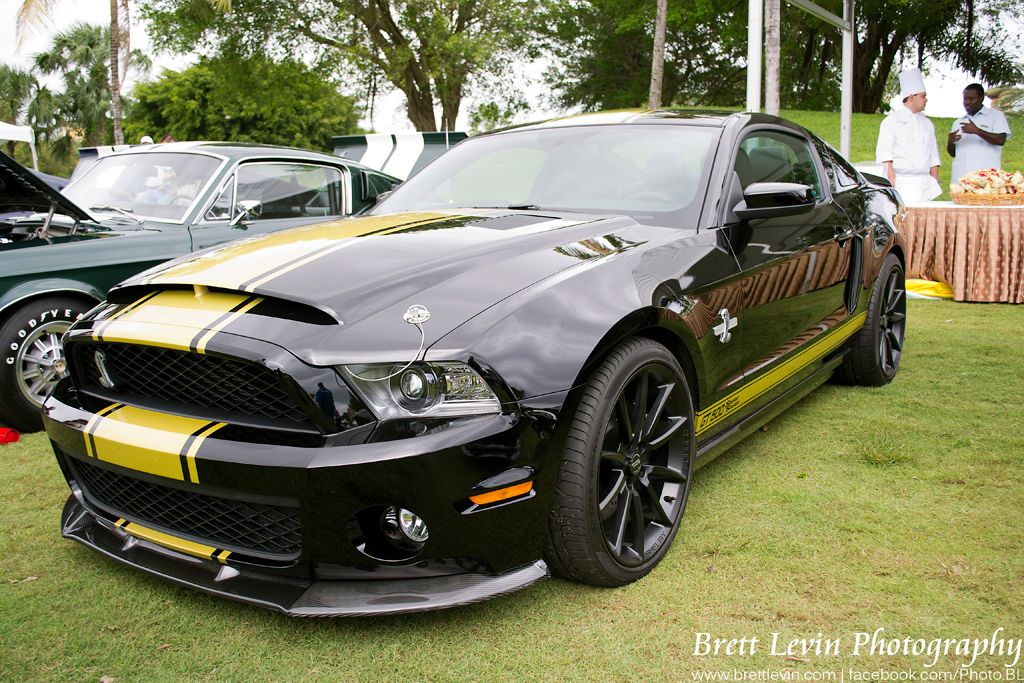
8. **Eleanor from “Gone in 60 Seconds”**
Ah, Eleanor. Even the name evokes a certain thrill, doesn’t it? For many, the modified 1967 Ford Mustang Shelby GT500 from the 2000 remake of “Gone in 60 Seconds” became the ultimate dream car. Designed by the visionary Steve Stanford, this wasn’t just a Mustang; it was a statement, a piece of automotive art that transcended the screen to become a coveted legend. It perfectly captured the raw, untamed spirit of American muscle, instantly identifiable with its exaggerated GT500 styling.
The allure of Eleanor was so potent that it created a frenzy among fans, inspiring countless tributes and replicas. However, this widespread adoration also led to a fascinating legal battle. The context tells us that Eleanor’s specific design was so profoundly influential that “unauthorized replicas faced legal challenges.” This level of legal protection for a movie car’s likeness truly underscores its immense cultural impact and desirability, elevating it beyond a mere vehicle to a protected automotive celebrity.
The hero car itself, famously piloted by Nicolas Cage as master car thief Randall “Memphis” Raines, didn’t just fade away into cinematic obscurity. Its incredible value was reaffirmed when it made headlines, selling for a staggering “$1.1 million at auction in 2013.” This wasn’t just a prop sale; it was a testament to how deeply this specific iteration of the Mustang resonated with audiences, solidifying its place in the pantheon of Hollywood’s most desirable vehicles. Its fame certainly surpassed the original 1974 film’s Eleanor, a 1973 Mustang Mach 1 that Toby Halicki drove and starred in.
The strict copyright on “The Eleanor name and likeness” meant that “several builders receiving cease-and-desist orders for creating tributes.” This legal precedent highlights a unique aspect of its legacy: it’s not just about the car on screen, but the brand, the design, and the thrilling story that made it unforgettable. Eleanor remains a unique and highly valued entity, reminding us that sometimes, iconic status comes with a stern legal team.
Car Model Information: 2008 Ford Mustang GT Premium
Name: Ford Mustang
Caption: 2018 Ford Mustang GT 5.0
Aka: Ford T5 (Germany)
Manufacturer: Ford Motor Company
Production: March 1964 – present
ModelYears: 1965–present
Class: Unbulleted list
BodyStyle: Unbulleted list
Layout: Front-engine, rear-wheel-drive layout
Categories: 1970s cars, 1980s cars, 1990s cars, 2+2 coupés, 2000s cars
Summary: The Ford Mustang is an American automobile manufactured and marketed by Ford since 1964, as Ford’s longest nameplate in continuous production. Currently in its seventh generation, it is the fifth-best selling Ford car nameplate. The namesake of the “pony car” automobile segment, the Mustang was developed as a highly styled line of sporty coupes and convertibles derived from existing model lines, initially distinguished by its pronounced “long hood, short deck” proportions.
Originally predicted to sell 100,000 vehicles yearly, the 1965 Mustang became the most successful vehicle launch since the 1927 Model A. Introduced on April 17, 1964 (16 days after the Plymouth Barracuda), over 400,000 units were sold in its first year; the one-millionth Mustang was sold within two years of its launch. In August 2018, Ford produced the 10-millionth Mustang; matching the first 1965 Mustang, the vehicle was a 2019 Wimbledon White convertible with a V8 engine.
The success of the Mustang launch led to multiple competitors from other American manufacturers, including the Chevrolet Camaro and Pontiac Firebird (1967), AMC Javelin (1968), and Dodge Challenger (1970). It also competed with the Plymouth Barracuda, which was launched around the same time. The Mustang also had an effect on designs of coupes worldwide, leading to the marketing of the Toyota Celica and Ford Capri in the United States (the latter, by Lincoln-Mercury). The Mercury Cougar was launched in 1967 as a unique-bodied higher-trim alternative to the Mustang; during the 1970s, it included more features and was marketed as a personal luxury car.
From 1965 until 2004, the Mustang shared chassis commonality with other Ford model lines, staying rear-wheel-drive throughout its production. From 1965 to 1973, the Mustang was derived from the 1960 Ford Falcon compact. From 1974 until 1978, the Mustang (denoted Mustang II) was a longer-wheelbase version of the Ford Pinto. From 1979 until 2004, the Mustang shared its Fox platform chassis with 14 other Ford vehicles (becoming the final one to use the Fox architecture). Since 2005, the Mustang has used the D2C platform, unique to the Mustang.
Through its production, multiple nameplates have been associated with the Ford Mustang series, including GT, Mach 1, Boss 302/429, Cobra (separate from Shelby Cobra), and Bullitt, along with “5.0” fender badging (denoting 4.9 L OHV or 5.0 L DOHC V8 engines).
Get more information about: Ford Mustang
Buying a high-performing used car >>>
Brand: Ford Model: Mustang
Price: $16,785 Mileage: 81,832 mi.
Read more about: Beyond the Screen: Uncovering the Fates of the Most Iconic TV and Movie Cars Ever
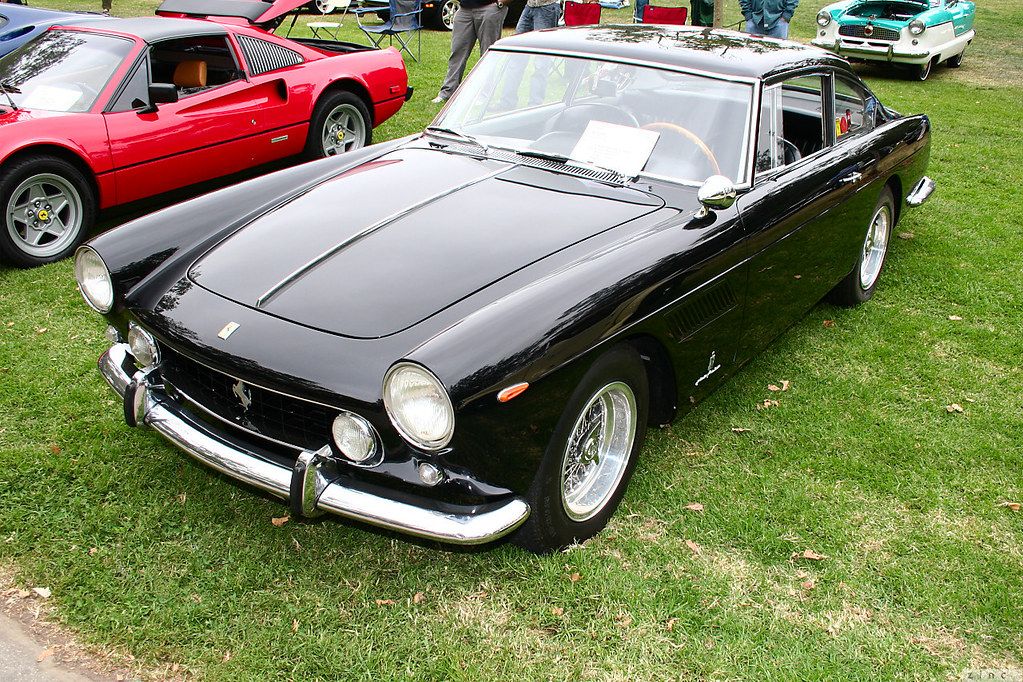
9. **The Ferrari California Spyder from “Ferris Bueller’s Day Off”**
Now, for a car that famously met its dramatic, window-shattering demise in “Ferris Bueller’s Day Off.” This sleek, red convertible, representing Cameron Frye’s dad’s prized 1961 Ferrari 250 GT California, captured the hearts of a generation. It became the ultimate symbol of rebellious freedom and the thrill of a joyride, a potent visual for anyone contemplating a skip day, despite its tragic on-screen fate. It was the first Ferrari many of us ever lusted after.
Here’s a delightful piece of trivia that might surprise even dedicated fans: that beautiful automobile “wasn’t actually a Ferrari.” That’s right, folks! It was a cleverly disguised replica known as a Modena GT Spyder. Director John Hughes recognized that using a genuine Ferrari for the stunt-heavy sequences would have been financially, and perhaps morally, irresponsible. The illusion was so perfectly crafted it fooled countless viewers into believing it was the real deal.
The good news is that not all of these cinematic doppelgangers met a terrible end in a ravine. “One of the three cars built for the film was restored after filming and sold at auction in 2020 for $396,000.” This is a significant sum for a car that’s essentially a well-made replica, showcasing the incredible value placed on cinematic history, regardless of its original manufacturer. As the context playfully notes, that’s “not bad for a ‘fake’ Ferrari!” This “fake” Ferrari continues to charm and entertain, proving that sometimes, appearances (and a great script) are everything.
This particular “Ferrari” scene is one of the most iconic moments in 80s cinema, making the replica car a star. The car’s role extended beyond mere transportation; it was a character in itself, an emblem of youthful rebellion and the temporary escape from adult responsibilities. Its legacy endures despite its “imitation” status.
Car Model Information: 2024 GMC Sierra 1500 SLT
Name: Ferrari 250 GT , California Spyder
Caption: Ferrari 250 GT California Spyder SWB at the Goodwood Revival 2009.
Manufacturer: Ferrari
Production: 1957–1963,(106 produced)
Assembly: Modena
Designer: Sergio Scaglietti
Class: Sports car
BodyStyle: Roadster (automobile)
Layout: Longitudinal engine,Front-engine, rear-wheel-drive layout#Front mid-engine, rear-wheel-drive layout
Engine: Ferrari Colombo engine
Related: Ferrari 250 GT Berlinetta
Transmission: Manual transmission
Wheelbase: 2600 mm
Abbr: on (dry)
Weight: 1100 kg
Successor: Ferrari Daytona
Categories: 1950s cars, 1960s cars, Articles with short description, CS1 maint: others, Cars introduced in 1957
Summary: The Ferrari 250 GT California Spyder is a sports car developed by the Italian automotive company Ferrari. It is presented by the brand as Ferrari 250 Gran Turismo Spyder California or simply Ferrari 250 California. It was designed by Sergio Scaglietti, who adapted the styling of the 250 GT Pininfarina, and was produced by Carrozzeria Scaglietti. The model gained considerable recognition following its appearance in the 1986 film Ferris Bueller’s Day Off.
The 250 GT California Spyder is a convertible version of the contemporary Berlinetta. It is powered by the traditional Ferrari V12 engine and was produced in approximately 100 units, nearly equally split between long wheel-bases (LWB) versions from 1957 to 1960 and short wheelbase (SWB) versions from 1960 to 1963.
At auction French actor Alain Delon sold for nearly EUR 16.3 million in February 2015 Christies sold a rare variant for USD 25 million at 2025 Monterey Car Week.
Get more information about: Ferrari 250 GT California Spyder
Buying a high-performing used car >>>
Brand: Ferrari Model: 250 GT California
Price: $43,759 Mileage: 32,694 mi.
Read more about: Rev Your Engines! The Reality Check on 13 Beloved Movie Cars That Just Can’t Exist as They Do On Screen
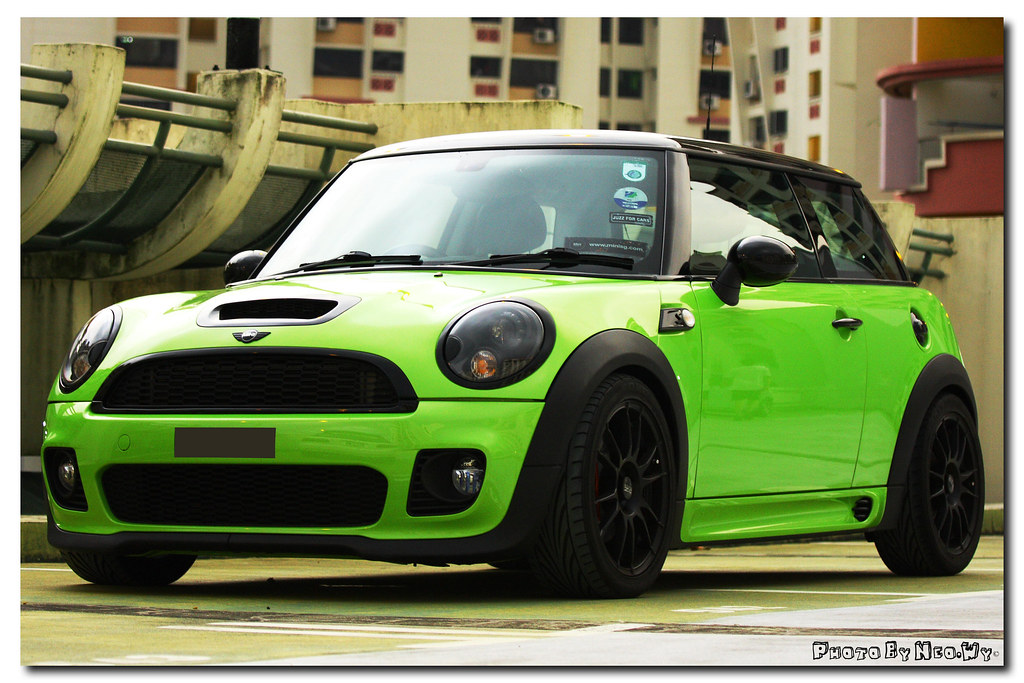
10. **The Mini Coopers from “The Italian Job”**
When you think of a thrilling heist, your mind might conjure up images of powerful, flashy sports cars. But “The Italian Job” flipped that script entirely, proving that sometimes, the most unassuming vehicles can be the biggest heroes. The 2003 remake featured three specially modified Mini Coopers performing incredible stunts through the bustling streets, down staircases, and even the subterranean tunnels of Los Angeles.
These pint-sized powerhouses were the undeniable stars of the film’s epic chase sequences, showcasing unparalleled agility and a surprising amount of grit. The context reveals the sheer scale of their involvement: “Thirty-two Mini Coopers were used in filming, each modified for specific stunts.” Imagine a fleet of these agile machines, each meticulously prepared to perform daring feats that would leave audiences on the edge of their seats! It truly speaks to the complexity and precision required to pull off such memorable, traffic-defying action.
After the adrenaline-fueled production wrapped, these automotive stunt doubles didn’t just disappear into the Hollywood ether. “BMW kept two of the hero cars for its corporate collection, while others were given to key cast members as gifts after production wrapped.” What a fantastic memento to receive, a literal piece of film history you can park in your driveway! It’s a wonderful way to honor their contribution to the film and ensures that these particular Minis continue to be admired, not just as movie props, but as symbols of an iconic cinematic moment that introduced Americans to the concept of small cars being awesome.
The original 1968 Mini Coopers from the British heist classic are equally revered, being central to “Britain’s greatest heist.” The enduring appeal of the Mini in both films speaks to its timeless design and inherent “cool” factor, proving that when it comes to thrilling cinematic car chases, size truly doesn’t matter.
Car Model Information: 2013 MINI Coupe Cooper S
Categories: All set index articles, Articles with short description, Set index articles on cars, Short description is different from Wikidata
Summary: Mini Cooper may refer to:
Performance Cars of the original Mini series with uprated drive train and brakes, called the “Mini Cooper”, made by the British Motor Corporation and also the successors 1961–1971, and 1990–2000
Cars of the Mini (marque), including several different models produced by BMW since 2000 with the “Mini Cooper” title:
Mini Hatch, introduced in early 2000, second generation from 2006, third generation from 2014, and fourth generation from 2024, changing the model name to MINI Cooper.
Mini Clubman (2007–2024)
Mini Countryman
Mini Coupé (2011–2015) and Roadster (2012–2015)
Mini Paceman (2012–2016)
Mini Aceman
Get more information about: Mini Cooper
Buying a high-performing used car >>>
Brand: Mini Model: Cooper
Price: $11,875 Mileage: 78,956 mi.
Read more about: Rev Your Engines! The Reality Check on 13 Beloved Movie Cars That Just Can’t Exist as They Do On Screen
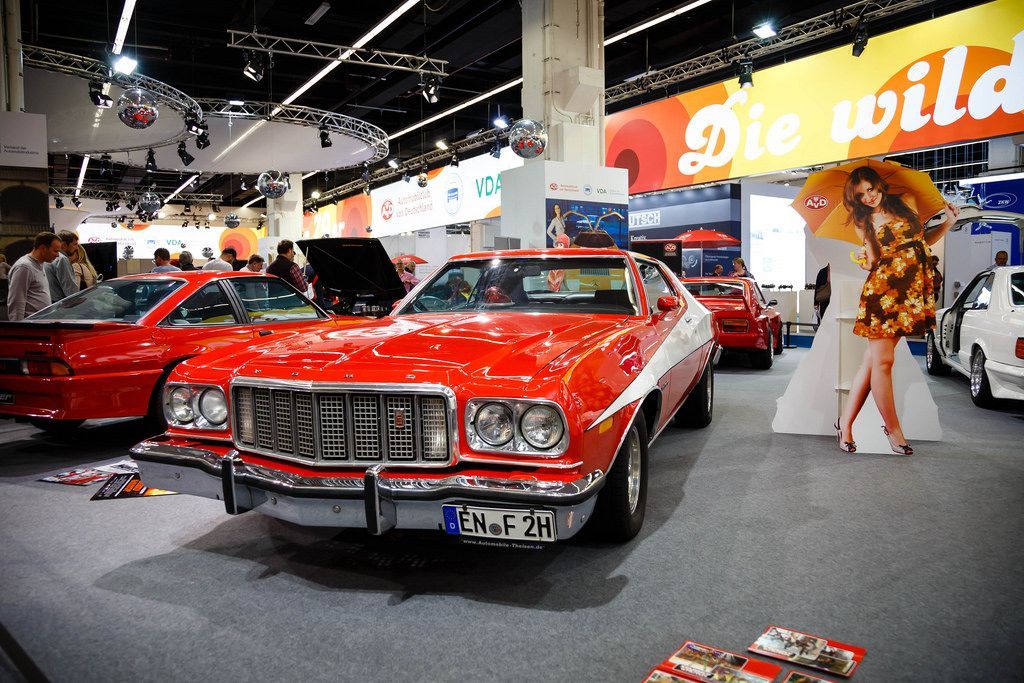
11. **The Ford Gran Torino from “Starsky & Hutch”**
“Do you recognize the ‘striped tomato’?” If you were a fan of 70s television, the answer is an emphatic yes! The bright red Ford Gran Torino with its distinctive white stripe, affectionately nicknamed by fans, became one of the most recognizable police cars in television history. It was perhaps “the world’s worst undercover cop car” given its undeniable flashiness, but who needs subtlety when you have such undeniable style and a knack for making dramatic entrances? For four seasons on ABC, from 1975-1979, it was truly awesome.
This iconic ride was as much a part of the detective duo’s identity as their casual banter and penchant for justice. Its vivid presence made it an unforgettable character itself, standing out against the backdrop of countless other police procedurals. The context indicates that “around seven Gran Torinos were used during the series’ run,” a testament to the wear and tear of those high-speed pursuits and dramatic screeching stops. Each vehicle played its part in delivering the thrilling action that kept viewers glued to their screens.
Fortunately for enthusiasts and fans of Bay City’s finest, the legacy of the “striped tomato” lives on in remarkable fashion. “One authenticated screen-used car was purchased by the Harrington Collection for $40,000 and subsequently restored to its on-screen condition, complete with period-correct police equipment.” Imagine seeing that beauty, fully kitted out as if it just rolled off the set, ready for a new case, lights flashing and siren wailing.
This restoration ensures that a genuine piece of television history is preserved, allowing new generations to appreciate the artistry that went into making it such an indelible part of pop culture. It’s a fantastic example of a TV star car being given a second life, ready to evoke nostalgia and remind us all of those thrilling days when two cool cops and their “striped tomato” ruled the airwaves.
Car Model Information: 2024 GMC Sierra 1500 SLT
Aka: Ford Fairlane (Venezuela)
Name: Ford Torino
Caption: 1970 Ford Torino Cobra SportsRoof
Manufacturer: Ford Motor Company
Production: 1968–1976
Class: Mid-size car,muscle car
Layout: FR layout
Related: Mercury Montego
Assembly: ubl
Predecessor: Ford Fairlane (Americas)
Successor: Ford LTD II
Categories: 1960s cars, 1970s cars, All Wikipedia articles written in American English, All articles with vague or ambiguous time, Articles with short description
Summary: The Ford Torino is an automobile that was produced by Ford for the North American market between 1968 and 1976. It was a competitor in the intermediate market segment and essentially a twin to the Mercury Montego line.
Just as the Ford LTD had been the upscale version of the Ford Galaxie, the Torino was initially an upscale variation of the intermediate-sized Ford Fairlane. In the 1968 and 1969 model years, the intermediate Ford line consisted of lower-trim Fairlanes and its subseries, the upper-trim Torino models. In 1970, Torino became the primary name for Ford’s intermediate, and the Fairlane was now a subseries of the Torino. In 1971, the Fairlane name was dropped altogether, and all Ford intermediates were called Torino.
Most Torinos were conventional cars, and generally the most popular models were the four-door sedans and two-door hardtops. However, Ford produced some high-performance “muscle car” versions of the Torino by fitting them with large powerful engines, such as the 428 cu in (7.0 L) and 429 cu in (7.0 L) “Cobra-Jet” engines. Ford also chose the Torino as the base for its NASCAR entrants, and it has a successful racing heritage.
Get more information about: Ford Torino
Buying a high-performing used car >>>
Brand: Ford Model: Gran Torino
Price: $43,759 Mileage: 32,694 mi.
Read more about: Rev Your Engines! The Reality Check on 13 Beloved Movie Cars That Just Can’t Exist as They Do On Screen
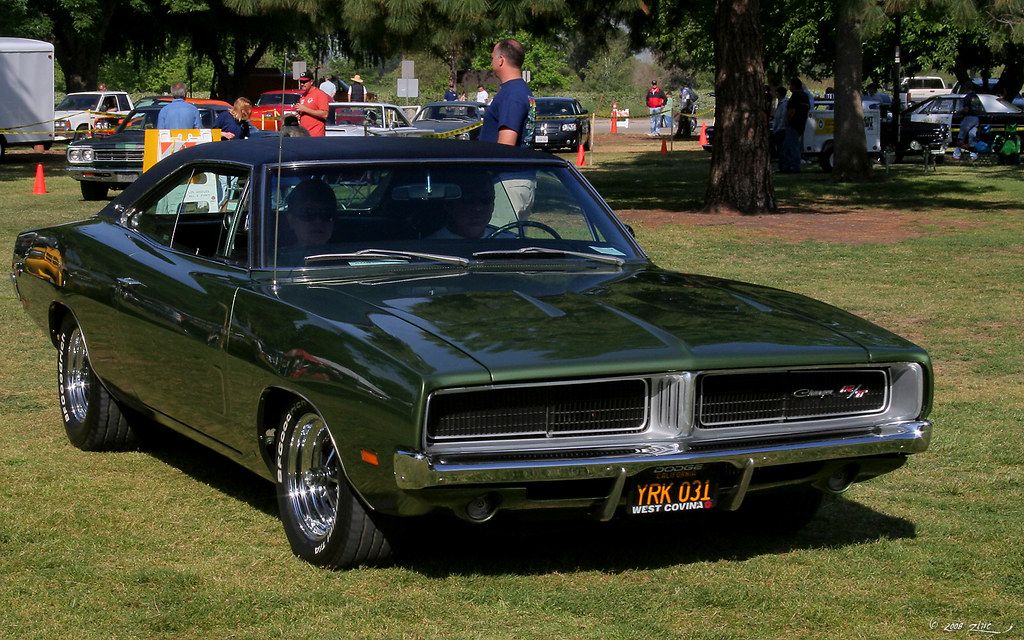
12. **The Dodge Charger from “The Fast and the Furious”**
When Dominic Toretto, portrayed by Vin Diesel, first laid eyes on his menacing black 1970 Dodge Charger R/T, it was clear this wasn’t just a car; it was a beast, an extension of his own formidable presence. This isn’t merely a vehicle from “The Fast and the Furious”; it’s arguably *the* iconic car of the entire franchise, a symbol of raw power, untamed speed, and rebellious spirit. It has graced multiple films, embodying the heart and soul of the Toretto family and their high-octane world.
The sheer on-screen presence of this muscle car was so intimidating that, as the context points out from a different list, “Vin Diesel is scared to drive it in the original film.” That speaks volumes about its power and the respect (or fear) it instilled! Naturally, to bring such a formidable machine to life for the big screen and endure the relentless demands of high-speed action, “Several versions were built for the original movie, with most destroyed during filming,” a common fate for vehicles pushed to their absolute limits.
But fear not, fans of furious driving and family! The legend of Dom’s Charger continues to roar, a testament to its enduring popularity. “One surviving car was kept by Universal Studios and has been updated throughout the years for subsequent appearances in the later films.” This means that a genuine piece of original movie magic has been lovingly maintained, adapted, and resurrected, allowing it to evolve with the franchise and continue its pivotal role as a key character, often appearing in dramatic climaxes.
This Charger, recognized as the iconic car from the movie series, proves that some automotive stars just keep on revving, returning time and again to remind us of their unforgettable power. Its journey from being a prop to a meticulously preserved and continually utilized piece of cinematic history underscores its immense value and lasting impact on the global pop culture landscape.
Car Model Information: 2024 GMC Sierra 1500 SLT
Name: Dodge Charger
Caption: 1969 Dodge Charger
Manufacturer: Dodge
Production: 1966–1978,1981–1987,2005–present
ModelYears: 1966–1978,1982–1987,2006–present
Categories: 1960s cars, 1970s cars, 1980s cars, 2000s cars, 2010s cars
Summary: The Dodge Charger is a model of automobile marketed by Dodge in various forms over eight generations since 1966.
The first Charger was a show car in 1964. A 1965 Charger II concept car resembled the 1966 production version.
In the United States, the Charger nameplate has been used on mid-size cars, personal luxury coupes, subcompact hatchbacks, and full-size sedans.
Get more information about: Dodge Charger
Buying a high-performing used car >>>
Brand: Dodge Model: Charger R/T
Price: $43,759 Mileage: 32,694 mi.
Read more about: Beyond the Screen: Uncovering the Fates of the Most Iconic TV and Movie Cars Ever
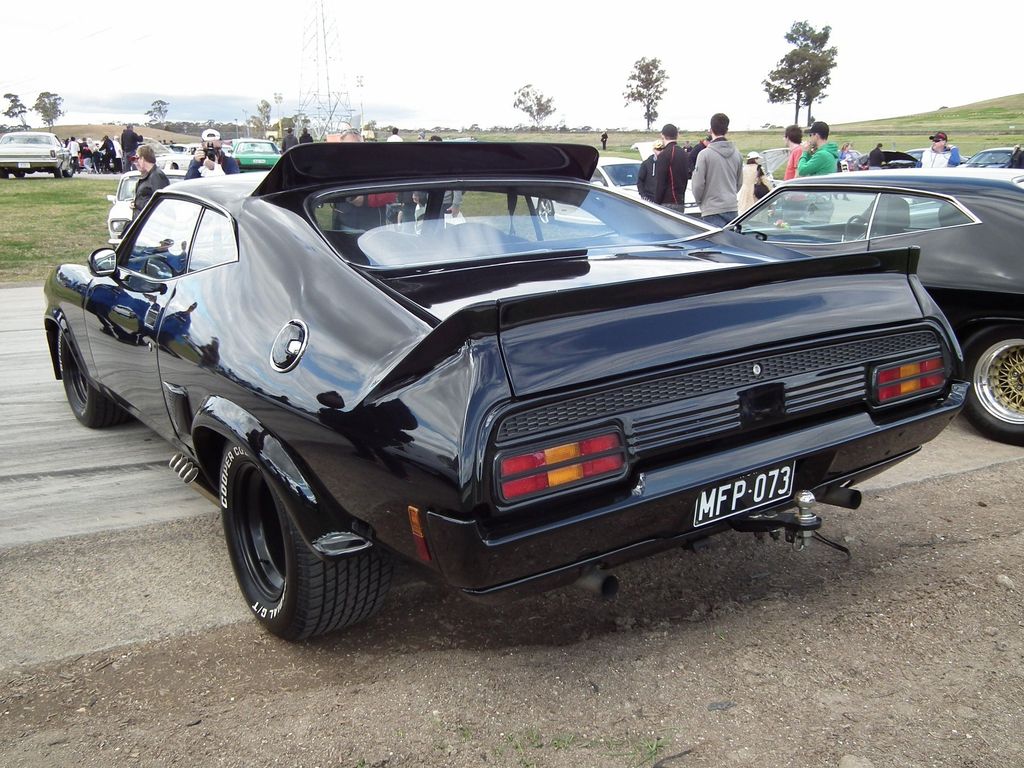
13. **The Ford Falcon XB GT from “Mad Max”**
Enter the desolate, post-apocalyptic wasteland of George Miller’s iconic “Mad Max” universe, and you’ll immediately recognize “The Pursuit Special” or “The Last of the V8 Interceptors,” the intimidating Ford Falcon XB GT. Originally a powerful Australian muscle car, this altered version, with its distinctive supercharger that “everyone wants a blower that can be turned on and off,” became a dark, iconic symbol of dystopian cinema. It perfectly complemented Mel Gibson’s grim determination in the groundbreaking 1979 film.
Its menacing aesthetics and raw power were instrumental in shaping the film’s gritty, petrol-fueled vision of a crumbling society. The Falcon wasn’t just transportation for Max Rockatansky; it was his sanctuary, his weapon, and his last shred of hope against the marauding gangs. The car itself became as unforgettable as the character, a stark representation of survival and vengeance in a world gone mad.
What’s particularly fascinating about this specific cinematic relic is its remarkable survival story. After its intense on-screen battles, high-speed chases, and gritty performances through the first trilogy, “The car was saved from a scrapyard and rebuilt after shooting the first trilogy.” This is a truly remarkable testament to its significance, that someone recognized its value beyond its cinematic role and invested considerable effort into its preservation. It’s a true phoenix from the ashes of cinematic chaos.
Today, this formidable machine isn’t just a memory; it’s a valuable piece of film history, living a surprisingly comfortable life far from the scorched earth it once traversed. “Valued at almost $5 million, it presently lives in the Orlando Auto Museum after passing ownership multiple times.” From the desolate highways of a fictional future to a prestigious museum, the Falcon has certainly had an incredible journey, continuing to thrill fans and remind us of the enduring power of classic dystopian filmmaking.
Car Model Information: 2024 GMC Sierra 1500 SLT
Caption: Ford Falcon 500 (XB) sedan with GS Rally Pack
Name: Ford Falcon (XB) , Ford Futura (XB) , Ford Fairmont (XB)
Manufacturer: Ford Australia
Production: September 1973 – July 1976
Predecessor: Ford Falcon (XA)
Successor: Ford Falcon (XC)
Class: Full-size car
BodyStyle: Sedan (car)
Engine: 200ci 6-cyl (3.3L),250ci 6-cyl (4.1L),302ci V8 (4.9L),351ci V8 (5.8L)
Transmission: 3spd manual (column),4spd manual (floor),3spd auto (column & floor)
Wheelbase: 2819 mm
Abbr: on
Length: 4808 mm
Width: 1900 mm
Height: 1369 mm
Weight: 1394 kg
Designer: Wayne Draper
Categories: 1970s cars, Articles with short description, Cars discontinued in 1976, Cars introduced in 1973, Cars of Australia
Summary: The Ford Falcon (XB) is a full-size car that was produced by Ford Australia from 1973 to 1976. It was the second iteration of the third generation of the Falcon and also included the Ford Fairmont (XB), the luxury-oriented version.
Get more information about: Ford Falcon (XB)
Buying a high-performing used car >>>
Brand: Ford Model: Falcon XB GT
Price: $43,759 Mileage: 32,694 mi.
Read more about: Rev Your Engines! The Reality Check on 13 Beloved Movie Cars That Just Can’t Exist as They Do On Screen
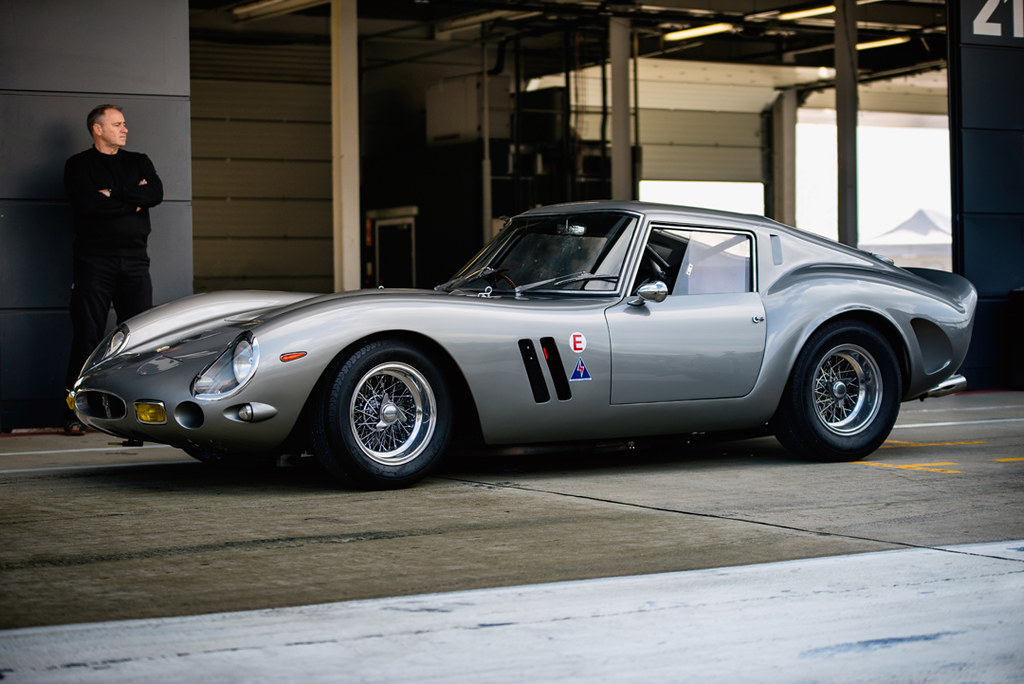
14. **The 1961 Ferrari 250 GT from “Ferris Bueller’s Day Off”**
Now, let’s circle back to another automotive star from “Ferris Bueller’s Day Off,” adding another layer to the film’s clever use of vehicles. While the Modena GT Spyder (posing as a California Spyder) was the focus of the dramatic garage scene, the context also mentions the “1961 Ferrari 250 GT.” This tidbit clarifies that “Much like the California Spyder mentioned earlier, this wasn’t a genuine Ferrari either,” reinforcing the ingenious filmmaking approach. It allowed them to create such memorable moments without risking priceless originals.
For the explicit purpose of filming, “Three replicas were built for filming, with one selling at auction for $407,000 in 2018.” This again underscores the incredible value that movie props, even exceptionally well-crafted replicas, can accrue over time. It speaks volumes about the power of the film itself, how deeply it resonated with audiences, and how strongly the imagery of these cars is associated with that indelible cinematic experience. It’s a literal piece of movie magic that a lucky collector now cherishes.
The humorous irony, as the context points out with a knowing wink, is that “a real Ferrari 250 GT from that era would now be worth around $10 million—far more than anyone anticipated when the replica was created for the film.” This serves as a fascinating footnote to the film’s legacy, illustrating the ever-escalating appreciation for classic automobiles. The replicas, while not originals, command impressive sums due to their iconic role in cinematic history, proving that sometimes, the story behind the car is just as valuable as its pedigree.
This particular Ferrari, or its replica, is another prime example of how cars in cinema become characters themselves, often stealing scenes and making lasting impressions. Whether it was the car that inspired a day of hooky or the vehicle that taught us about the value of friendship, its place in pop culture is undeniable, ensuring its legacy continues to drive on.
Car Model Information: 2024 GMC Sierra 1500 SLT
Name: Ferrari 250
Caption: 1962 Ferrari 250 GT/E
Manufacturer: Ferrari
Production: 1952–1964
Designer: Giotto Bizzarrini,Scaglietti,Pinin Farina,Vignale,Ghia
Class: Grand Tourer
BodyStyle: Berlinetta,cabriolet,coupé
Layout: Longitudinal engine,Front-engine, rear-wheel-drive layout
Engine: Ferrari Colombo engine,V12 engine
Transmission: Manual transmission
Wheelbase: 2400 mm
Abbr: on (Europa)
Predecessor: Ferrari 212 Inter
Successor: Ferrari 275
Categories: 1950s cars, 1960s cars, 24 Hours of Le Mans race cars, Articles with short description, Commons category link is on Wikidata
Summary: The Ferrari 250 is a series of sports cars and grand tourers built by Ferrari from 1952 to 1964. The company’s most successful early line, the 250 series includes many variants designed for road use or sports car racing. 250 series cars are characterized by their use of a 3.0 L (2,953 cc) Colombo V12 engine designed by Gioacchino Colombo. The 250 series designation refers to this engine’s cylinder displacement of approximately 250 cc. They were replaced by the 275 and 330 series cars.
Get more information about: Ferrari 250
Buying a high-performing used car >>>
Brand: Ferrari Model: 250 GT
Price: $43,759 Mileage: 32,694 mi.
Read more about: Rev Your Engines! The Reality Check on 13 Beloved Movie Cars That Just Can’t Exist as They Do On Screen
From the roaring muscle of “Mad Max” to the sly deception of “Ferris Bueller’s Day Off,” and from high-speed chases to thrilling heists, these cars continue to captivate and inspire. Their journeys from the silver screen to museums, private collections, and even the hands of their original actors are as varied and fascinating as the films and shows that made them famous. They are more than mere machines; they are cultural touchstones, symbols of freedom, adventure, and the limitless imagination of Hollywood. They tap into our collective dreams of rebellion, heroism, and the open road, proving that a well-chosen car can indeed steal scenes and hearts alike, cementing their place as true legends of the road, both real and reel, for generations to come.


